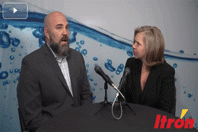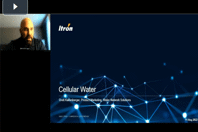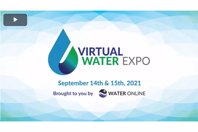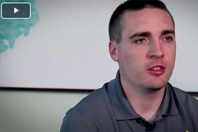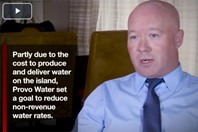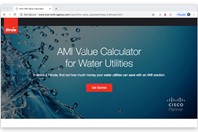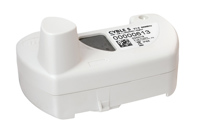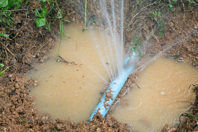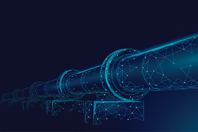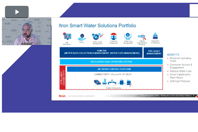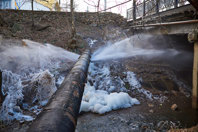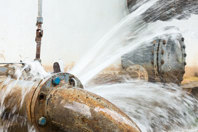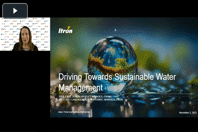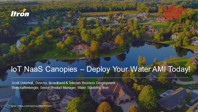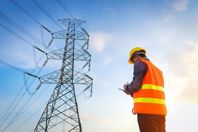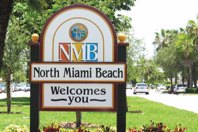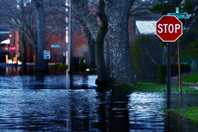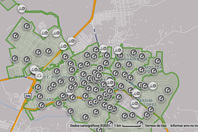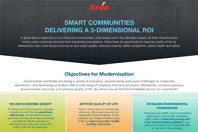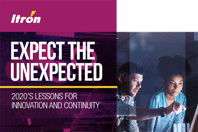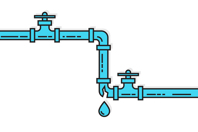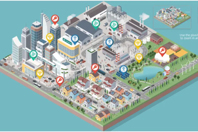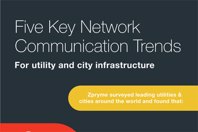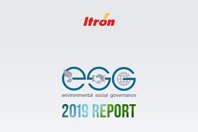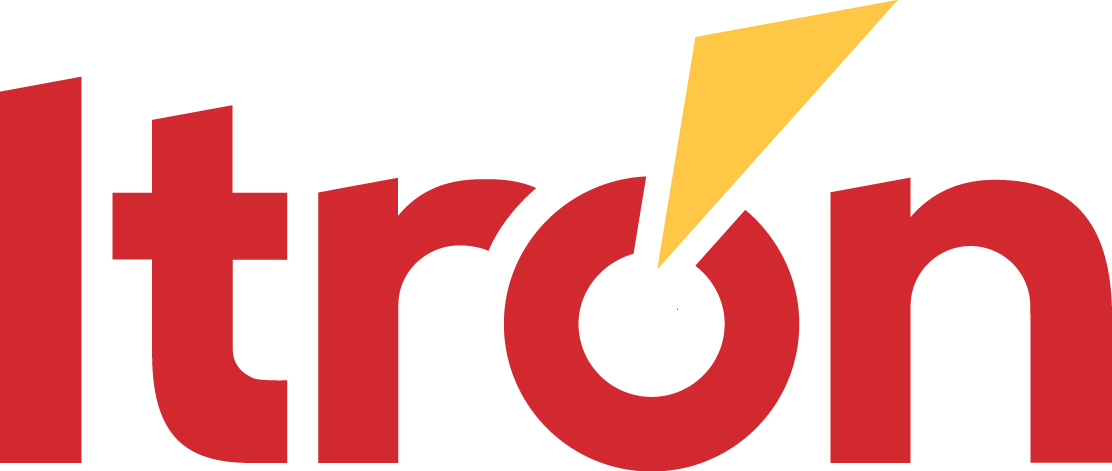
ABOUT ITRON
Itron is a proven global leader in energy, water, smart city, IIoT and intelligent infrastructure services. For utilities, cities and society, we build innovative systems, create new efficiencies, connect communities, encourage conservation and increase resourcefulness. By safeguarding our invaluable natural resources today and tomorrow, we improve the quality of life for people around the world. Join us: www.itron.com.
VIDEOS
-
In this episode of Water Talk, Sheila Kee from Itron gives us insight into how Itron is innovating new methods for water utilities and cities to manage their water and energy resources more effectively.
-
In this episode of Water Talk, Angela Godwin sits down with Brett Kaffenberger from Itron to talk about shared AMI networks.
-
In this session learn more about the economic, operational and customer benefits of deploying cellular networks for better managing water resources.
-
Watch a software demo for Temetra, Itron's next-generation mobile meter data collection and management solution now deployed across millions of meters across the globe. Through an intuitive web-based interface with powerful mapping functionality, it provides you with new ways to optimize your meter route management and quickly sync meter data.
-
Addressing aging infrastructure, operational and billing challenges, and water scarcity is critical to your utility. What if you could detect outdated assets, automate billing, help your teams work faster and combat water losses? By improving billing accuracy and operational efficiencies, and enabling non-revenue water reductions, the health of your water distribution can be greatly improved. Wherever you are in your digitalization journey, learn how to establish a flexible, simple, and efficient water network that will help you address your business challenges, achieve measurable results and realize greater value.
-
Temetra is Itron's next-generation mobile meter data collection and management solution. Through an intuitive web-based interface with powerful mapping functionality, it provides you with new ways to optimize your meter route management and quickly sync meter data.
-
Learn about Itron's purpose, how we help our customers succeed, and how we're helping to create a more resourceful world.
-
Water Operations Management help you identify, prioritize and take action to reduce Non-Revenue Water for both real and apparent water losses as well as help you optimize and efficiently manage your distribution network.
-
Hear how the City of Fairborn, Ohio is taking the next step in their smart water journey with Itron.
-
When utility customers turn on a faucet, the expectation is that water flows freely and maintains constant pressure. But, what happens when water consumption issues cause an entire customer population to have little-to-no water pressure?
-
Esval, a water supply distribution, production, recollection and treatment provider for 2.5 million customers in Chile is leveraging water analytics software and sensors to obtain near real-time data and derive operational value.
-
In 2017, Hurricane Irma brought severe winds and destruction to the islands of the Turks and Caicos. Learn how the local water supplier, Provo Water, was able to restore service in just four days after the devastation.
-
Non-revenue water is a costly challenge for any provider—especially so on an island where your water is produced through reverse osmosis. Provo Water, in the Turks and Caicos, leveraged data from its AMI system and analytics to reduce its NRW rates. Provo Water also leverages Itron Managed Services to ensure its operations aren't impacted by adverse weather in the region.
BROCHURES
-
Smart Water Solutions To Connect Every Drop8/26/2021
More than ever, utilities are challenged in managing their aging water distribution networks. Everything from reducing costs and implementing conservation programs to dealing with unbilled consumption, physical losses and new regulations—all of which impact the ability to effectively serve consumers. You need a trusted partner to help implement smart water solutions— cost-effective solutions that can scale and grow with your requirements today and into the future.
-
Temetra Analysis Brochure1/20/2021
Itron is dedicated to creating a more resourceful world. We believe that the way energy and water are managed will define this century. By working with our customers to ensure their success, we can improve the quality of life, ensure the safety and promote the wellbeing of people around the globe.
-
Cyble 5 Multi-Connectivity RF Module5/4/2020
The Cyble 5 is a unique solution helping utilities engage in the ongoing digitalization of their water and gas distribution networks. Designed to transform mechanical meters into communication data points, Cyble 5 enables fast drive-by (AMR) and IoT data collection allowing for better billing efficiency. Conceived for agility with its embedded multi-connectivity options, Cyble 5 adapts to complex deployments and evolves with the needs from the field, making it a safe and long-term investment.
-
Temetra® Brochure2/6/2020
Temetra is Itron’s next-generation mobile meter data collection and management solution, providing you with new ways to optimize your operations and improve customer engagement. With full Itron Mobile integration, Temetra provides you with a complete, cutting-edge mobile data collection package in the cloud.
NEWS
- Eastside Utility District To Modernize Water Network In Tennessee With Itron's Smart Water Solution
- Itron Celebrates More Than 1 Million Cyble™ 5 Communication Modules Shipped
- Itron Joins The Green Button Alliance To Help Advance Green Button Standard
- Itron's Advanced Settlement Module Provides High Granularity, Industry-Leading Integration And Complete Energy Market Coverage
- Itron Unveils 2022 Environmental Social Governance Report
- Italian Water Distributor, Abbanoa, To Deploy Itron's Next Generation Ultrasonic Water Meter For Massive Replacement Campaign On Island
- Itron Signs Contract To Transform Water Operations In Indonesia's Fully Integrated Industrial Estate
- Itron Network Canopy To Be Deployed In Singapore For Smart Water Metering
- Itron's Solutions To Digitally Transform Warwickshire Into A Smart Water Region
- City Of London Corporation Wins Itron Innovator Award
- Itron: A Strong Performer
- Itron Inspire 2022 To Gather Industry Leaders In Person For First Time In Three Years
- Itron And Yokogawa Electric Corporation Reduce Water Loss In India
- Itron To Modernize Water Infrastructure In Tennessee
- Itron To Improve Water Efficiency And Reduce Water Losses In Moldova
- Welsh Utility Signs Contract With Itron To Improve Water Data Management
- Itron Signs Contract With United Utilities In England To Optimize Operations
- Itron Wins 'Public Safety Innovation Of The Year' IoT Breakthrough Award For Third Consecutive Year
- Itron Achieves Record Registration At First-Ever Virtual Itron Utility Week
- Itron Unveils Lineup For Virtual Itron Utility Week 2020
- Itron Receives 2020 IoT Evolution Product Of The Year Award
- Itron Honored As Gold Stevie® Award Winner In 2020 American Business Awards®
- Itron And Smart Energy Water Sign Reseller Agreement To Promote Customer Experience In The Global Energy And Water Industries
CONTACT INFORMATION
Itron
2111 N. Molter Road
Liberty Lake, WA 99019
UNITED STATES
Phone: 919-271-9876
Contact: Becca Jones
WATER AMI CALCULATOR
-
We’re committed to applying best-in-class IoT-enabled solutions to help utilities and cities be more resourceful. Find out how much money you could be saving with AMI.
FEATURED PRODUCTS
-
Designed to transform mechanical meters into communication data points, Itron's Cyble communication modules enable remote reading and monitoring of water meters on-site events.
-
Temetra is Itron’s next-generation mobile meter data collection and management solution, providing you with new ways to optimize your operations and improve customer engagement. With full Itron Mobile integration, Temetra provides you with a complete, cutting-edge mobile data collection package in the cloud.
FEATURED ARTICLES
-
This white paper will explore a three-pronged approach to handling non-revenue water, helping utilities to manage costs and maintain a healthy water delivery ecosystem.
-
Water utilities stand at the intersection of legacy infrastructure and digital innovation. As demand grows and environmental pressures mount, utilities face the challenge of transitioning from siloed, fragmented data systems to cohesive platforms that unlock the full potential of digital transformation.
-
AI models give utility managers actionable insights into the health of their pipe networks, enabling a shift from reactive to predictive maintenance.
-
Join our webinar to explore successful strategies that Eastside Utility District developed to move from manual meter reading to a cellular-based advanced metering infrastructure (AMI) with full meter changeout. EUD will share their experiences along this journey and successes.
-
Having deployed cellular-based AMI with ultrasonic meters, EUD can more accurately monitor water consumption, see near-real-time leak alerts, and operate with greater efficiency and safely.
-
Read how Rogers Water Utility (RWU) took action to mitigate constant leaks in their distribution system, which made it challenging to maintain volume in the eastern district’s water tower.
-
In this case study, discover how continuous monitoring provided holistic network visibility, enabling proactive maintenance and preventing potential water pressure issues.
-
Identifying which pipes need replacement or repair is challenging because of a lack of complete information. Predictive AI can fill these gaps and provide desperately needed insights.
-
Read about an island that worked with Itron to reduce water losses in Sardinia by installing smart meters that accurately measure consumption and detect leaks. The goal is to improve water conservation and billing efficiency.
-
Water utilities must grasp the complete scope, including social and environmental costs, to comprehend the consequences of ignoring or postponing measures to address NRW.
-
Limited visibility into distribution networks can cause issues like undetected leaks and billing inaccuracies. AMI and analytics can provide continuous monitoring for improved anomaly detection and prioritized actions.
-
In this webinar, explore successful approaches from AMI deployments that lead to reducing non-revenue water, improving sustainable water management, and meeting the demands of today and the future.
-
Driven by cutting-edge sensor technology and data analytics, solid-state meters offer numerous benefits too compelling to ignore.
-
Because you can’t track what you can’t measure, modern water solutions bridge the gap between the vision of secure water and the reality of existing infrastructure.
-
This article summarizes the findings of a study on California water usage before, during and after COVID restrictions, and assesses the feasibility of cutting residential usage by 15%.
-
By the end of 2022, nearly 80% of U.S. households will have a smart meter. While most of these meters are electric, the modern networks they communicate under often form canopies over many water utilities and municipalities. With the right multi-application network canopy in place, water utilities now have an unprecedented opportunity to immediately leverage these existing assets to deploy smart water meters, leak sensors, analytics, consumer portals and more at a fraction of the time, cost, and maintenance of building out a separate, single-purpose network.
-
Read how the San Antonio Water System (SAWS) is using an AMI Mesh Network canopy to improve both day-to-day operations of water distribution management and the health and wellbeing of its customers.
-
Hydraulic modeling offers a vast range of benefits such as improving system performance, long-term infrastructure planning, predicting and anticipating demographic changes, and more.
-
In this white paper, explore ways that utilities are prioritizing grid management use cases and challenges that utilities face in capturing the full value of AMI data.
-
Advancements in cellular-based advanced metering infrastructure (AMI) make it a viable way to provide reliability and cost-effectiveness in practical solutions for water utilities and municipalities.
-
Learn about some of the situations that can cause extreme changes in water usage patterns and how machine learning can help water utilities adapt.
-
The combination of water scarcity and aging infrastructure is pushing water utilities to use machine learning analytic software to predict demand patterns and develop long-term investment plans.
-
Failing infrastructure and water scarcity are two major issues for U.S. water utilities. One technology could help mitigate both problems.
-
A new, peer-reviewed study published on Nature.com confirms what water utilities know and confront every day — water scarcity is already a problem, and its growth is forcing action now. Here are tangible steps that can be taken to meet current and future challenges.
-
The Itron Field Tools mobile app has allowed for our Field Technicians to use their iPhones as a multifunctional device. The Field Tools App also allows us to upgrade with minimal involvement from our IT teams.
-
Water distribution system infrastructures are designed to deliver drinking water to end users, but utilities are continually faced with distinct challenges to fulfill this fundamental objective. For example, these utilities improve customer service by delivering water with high pressure, but on the other hand, water conservation policies push them to minimize water distribution leaks. For this reason, water utilities invest heavily in SCADA and telemetry technologies to support operational decisions. However, unlocking historical operational data and fusing it with other data (such as billing information from AMR/AMI networks) to generate actionable insights has proven difficult.
-
In 2020, the world got a firsthand glimpse into how warmer, drier conditions are enabling harsher periods of drought--resulting in longer fire seasons and greater water scarcity.
-
Until recently, the City of North Miami Beach relied on traditional walk-up, manual meter reading, and a leak detection service that visited quarterly to survey areas of its distribution system. Surveyors would visit two weeks per quarter, helping city staff systematically go from one end of the 550-mile pipeline system to the other in one-mile sections—it took one and a half years to get through the city’s 25-square-mile service territory. While the city was able to maintain its system and identify leaks, the process was labor intensive and the city understood that automating meter reading and leak detection could be done simultaneously, saving precious time, staff resources, money—and most importantly, water.
-
With resiliency, water scarcity, and cost efficiency top of mind for water utilities, smart water operations come to the fore as an all-of-the-above solution.
-
When the aging water distribution infrastructure in Araguaína, Brazil, (pop. 183,000) reached a level of 47 percent non-revenue-water (NRW) loss, the contracted utility operator knew that something needed to change.
-
When it comes to digital transformation via ‘smart city’ technologies for leak detection or sewer overflow prevention, utility needs inevitably overlap with the economic and infrastructure interests of other city operations. Evaluating operating efficiencies in the context of three-dimensional (3D) ROI can uncover practical ways to drive greater dividends for all concerned — utilities, society, and the environment around them.
-
A great deal is expected of our cities and communities, both today and in the decades ahead, as their infrastructures come under continual pressure from expanding populations. Cities have an opportunity to improve quality of life by addressing major local issues such as air and water quality, resource scarcity, traffic congestion, public health and safety. View the infographic to learn more.
-
In early May 2020, members of our conference advisory board responded to a questionnaire regarding the impacts of COVID-19 on their companies. They shared how the pandemic changed day-to-day operations, shifted priorities and re-oriented strategic planning in near and long terms.
-
Reducing water loss starts with proper perspective. In distribution systems that do not yet have permanent infrastructure monitoring for active leaks, even the approach to evaluating such infrastructure requires a new perspective. Here is how different technical approaches can make a difference, regardless of the age of the system or the pipe materials it uses.
-
From aging infrastructure and coping with natural disasters, to an increased desire to incorporate renewables and optimize the network, utilities and communities continue to adapt to the macro effects in play today. Now more than ever, we have a collective opportunity to find new ways to innovate and demonstrate resiliency through technology.
-
Dive into comprehensive global research about the network and use case application investment decisions that utilities and cities are making now. Learn how the adoption of technologies like RF Mesh and public cellular will fare over time.
-
Key network trends you can expect to see over the next decade – wrapped in an easily shareable PDF. Click to view the full infographic.
-
For the City of Fairborn, Ohio, switching from manual meter reading to automated meter reading (AMR) and eventually to advanced metering infrastructure (AMI) has made a small operations staff more productive, provided more timely information for the city’s water treatment plant and distribution system, and tremendously improved customer service. Learn about the benefits captured and lessons learned along the way.
-
At Itron, we believe that the way energy and water are managed will define this century. This belief drives us to create a more resourceful world—one that uses precious energy and water resources more efficiently and effectively, and one that is committed to sustainability. Resourcefulness ties our actions together, and by working with our customers to ensure their success, we can improve the quality of life, ensure the safety and promote the well-being of people around the globe. The following pages of this report highlight the work we have been doing toward our purpose.
-
Water distribution system managers and administrators — whether they are dealing with water scarcity, mandated regulatory compliance, or non-revenue water (NRW) losses — have to be concerned about financial as well as physical solutions. Fortunately, more comprehensive solutions are being developed to afford success in both of those areas. Here are several examples of what is being achieved.


